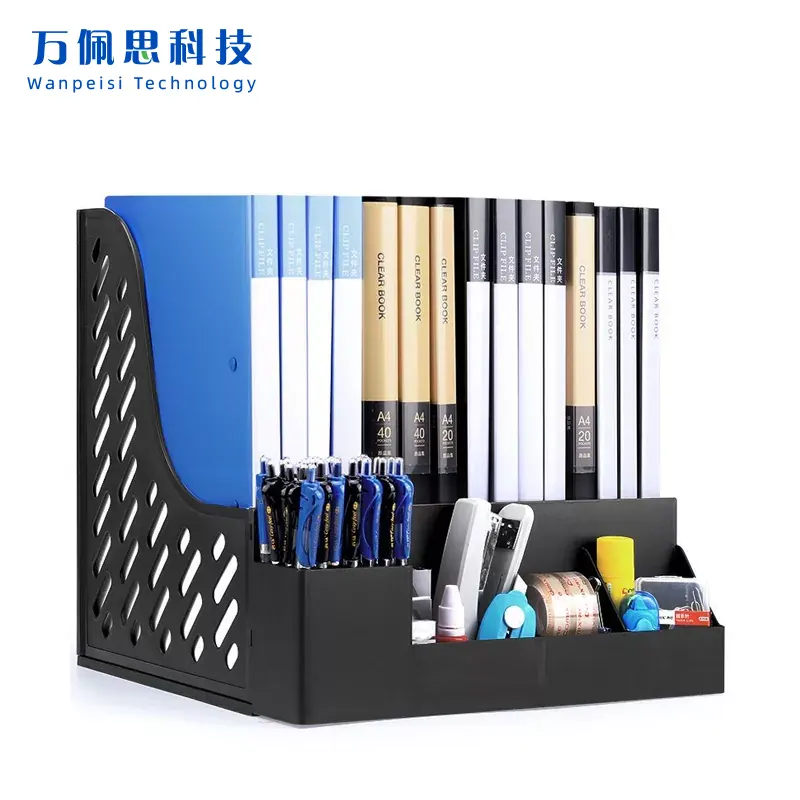What are the most popular plastic office supplies?
2024-09-16

What are the most common plastic office supplies?
Plastic office supplies are diverse and can serve various purposes. Some of the most common plastic office items include:
- Plastic file folders and organizers.
- Plastic staplers and perforators.
- Plastic cups and utensils for the break room.
- Plastic desk accessories such as pencil holders and paper trays.
- Plastic chairs, mats, and other furniture.
Are plastic office supplies eco-friendly?
Plastic office supplies are not eco-friendly, but some options on the market have a lower environmental impact. Some companies use recycled plastic, and some even use plant-based biodegradable materials.
Where can I purchase plastic office supplies?
Plastic office supplies are available in most office supply stores. Online retailers, such as Amazon and Alibaba, also sell them. If you're looking for environmentally friendly options, you may need to look online or specialty retailers.
Can I recycle plastic office supplies?
Most plastic office supplies are recyclable, but make sure to check with your local recycling program to see which types of plastic are accepted. To increase the chances of your plastic office supplies being recycled, make sure to separate them from other recyclables and follow your local recycling guidelines carefully.
Conclusion
In conclusion, plastic office supplies are a common sight in most offices. They are affordable, durable, and come in a variety of shapes and sizes. While they are not the most eco-friendly option, some manufacturers offer lower environmental impact plastic products. To ensure that your plastic office supplies are recycled, follow your local recycling guidelines and separate them from other recyclables.
Xiamen Wanpeisi Technology Co.,Ltd. is a company that specializes in plastic office supplies. We manufacture and supply a variety of plastic office supplies such as file folders, organizers, staplers, and desk accessories. Our products are of high quality, and we prioritize customer satisfaction. Contact us at jessica@wpsplastics.com for all your plastic office supplies needs. Visit our website at https://www.wpsplastics.com.
Research Papers
Zhang, L., & Wang, J. (2020). Effects of office design on employee satisfaction and productivity. Journal of Facilities Management, 18(2), 132-144.
Lee, J., & Park, S. (2019). Noise levels in open-plan offices–Effects of indoor plants and noise sensitivity. Journal of Environmental Psychology, 63, 75-82.
Kampschroer, K., & Heerwagen, J. (2019). I Too, Am Output: A Psychosocial Perspective on the Open Office Environment. Journal of Environmental Psychology, 65, 101333.
Lin, Y. J., & Chen, H. H. (2018). Indoor environment quality and occupant satisfaction in green-certified buildings. Journal of Environmental Management, 228, 44-52.
Gosselin, E., & Hurtubise, C. (2017). Individual and environmental mediators of open-space office noise distraction. Journal of Environmental Psychology, 51, 162-174.
Kim, H. B., Vosburgh, K. G., & Christensen, P. R. (2016). The effects of workplace telepressure and technology use on employee exhaustion and work-family conflict. Journal of Occupational Health Psychology, 21(3), 356-369.
Smith-Jackson, T. (2015). Exploring the relationship between employer-supported volunteering and employee job satisfaction, engagement and organizational commitment: An exploratory study. Journal of Business Psychology, 30(1), 131-143.
Wells, M. M., & Thelen, L. (2015). The ultimate workspace? Office design and productivity. Journal for Quality and Participation, 38(1), 34.
Smith-Jackson, T., & Ruderman, M. (2014). The future of work and family: Critical trends affecting work-family balance. Journal of Business and Psychology, 29(3), 365-372.
Shin, M., & Witcher, B. S. (2013). Organized administration, academic productivity, and perceived effectiveness: an examination of the influence of square footage per office occupant. The Journal of Higher Education, 84(2), 183-207.
Khalili, A., & Arjmandi, R. (2012). A new vision of the relationship between humidity and productivity in office environments. Building and Environment, 50, 98-106.


